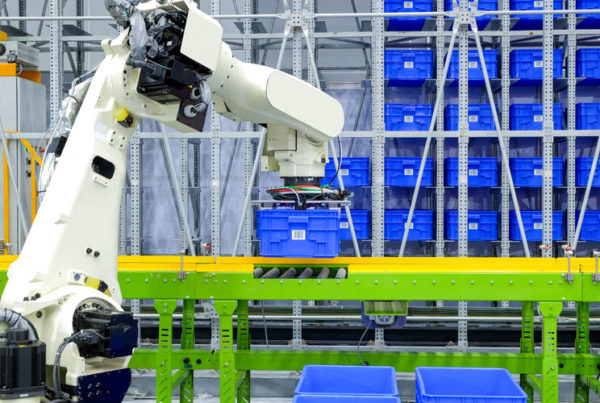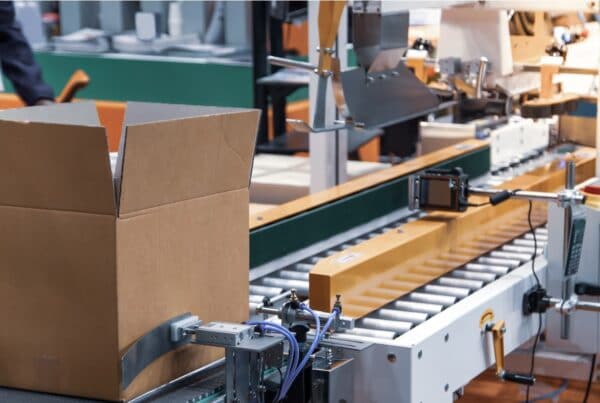The need to invest in Capital Expenditures (CapEx) is usually felt most by department heads – the people who, day in and day out, operate the facility. And yet investment decisions lie with upper management and owners, who are usually more aware of the overall budget and have their own perspective on how to prioritize investments.
The reality is that, no matter how inefficient the current systems are, investments represent a risk that decision makers may be hesitant to take.
The key to unlocking this risk-averse mindset is to build collaborations. You’ll need to collaborate first with your team members and managers. And then, you may choose to collaborate with experienced outside professionals who will also take the time to understand your underlying needs and offer holistic solutions.
Table of Contents:
- Understand the internal competition for CapEx
- Pay attention to the bottom line
- Continue with a collaborative process
- Prepare for an intensive discovery process
Understand the internal competition for CapEx
Whether you are the decision maker or are trying to convince/influence the decision maker, keep in mind that your project is competing with others for a pool of limited funds. Those other projects have champions; winning those champions over before final decisions are made will help your project get off the ground and ultimately succeed.
Look to build collaborations within the dynamic of your teams. Ideally, your project will improve efficiencies and throughput while reducing costs or headcount, all with a 2- or 3-year ROI. And those discussions will win over budget-minded stakeholders.
But also consider the effect your project can have on other departments.
- Can your project increase accuracy, quality, or throughput?
- How does your project affect the health and safety of the team? Can you enable the workforce to lift less, or operate at a more ergonomic height? Can you improve the safety of the environment?
- Human Resources. What will be the effect of your project on morale? Retention? Hiring?
- Marketing and Sales. Does your project offer higher standards or new equipment that will interest potential clients?
- Does your project offer improvements for management such as real-time feedback on key metrics, or improved data and analytics?
In material handling, many automated solutions provide most – or even all – of these benefits.
Pay attention to the bottom line
Managers and owners know the value of investing in their business. What they don’t know is the value of investing in your project.
Gaining priority for a CapEx project means providing decision makers with a solid business case.
As much as possible, use data to prove your project’s worth.
- Identify the benefits your project will bring by discussing them in terms of their operational effects. While it’s true that, for example, upgrading from a pallet jack to a forklift will make work easier, create a business case that focuses on things like the improvements to safety, throughput, and accuracy the project will bring.
- Link each benefit with a Key Performance Indicator (KPI) that can first predict, and later measure, the success of the operation. Weigh the cost of the investment against the operational benefits. Look at the expected ROI and how each benefit will contribute to that.
- Ensure that your project is in-line with company goals. If the company’s focus is on safety, sales, or anything else, look for solutions that benefit that focus while also addressing your other operational needs.
- Consider the costs and risks of not investing. Is your company falling behind its competition? Are you losing customers who want to work with more advanced, environmentally friendly, or safer operations than you currently provide?
Continue with a collaborative process
Finding collaborators within different departments of your company is important both to the initial implementation and ultimate success of your project.
As important as those collaborations are, it’s just as important to build a collaborative relationship with the company you choose to implement your project. Look for a company willing to think broadly about your project and how it can help your entire organization succeed.
The best partners will help you translate your long-term goals into a tangible roadmap. They’ll consider all the advantages and drawbacks of a project as well as different options and configurations, all with an eye for improving performance, efficiency, and ROI.
At PeakLogix, working collaboratively is ingrained in our corporate culture. We begin by asking, “Why?” Why do you feel you need this improvement? What are the goals of this project? And what are you really needing to achieve? We work to understand your challenges and provide a solution that’s targeted and viable enough to meet today’s challenges, and is also flexible and scalable enough to enable your future growth.
We consult with you to provide high-level layouts and concepts that clearly outline the costs and gains, including:
- Efficiency
- Throughput
- Productivity
- Sales
- Savings
- Response times
- Projected ROI
Prepare for an exhaustive discovery process
At PeakLogix, we can offer detailed services because we commit to an intensive discovery process.
Before we can help you find the best solution for your needs and offer insight into any hidden costs or unintended consequences, we thoroughly review your current operations. We outline costs and expected returns to match your goals, and tailor the right solution to meet your needs
Contact us to learn more about how we can help you build a business case designed to influence your project’s financing.
Creating efficiencies across 515,000+ sq. ft. of repurposed warehouse space
The additional space allows the shipbuilder to consolidate and centralize its logistics processes, purchase parts and materials in bulk, and reduce handoffs and infrastructure costs with enough square footage to aid future growth and storage needs during its 12-year lease.






